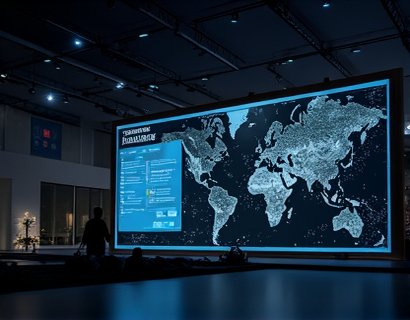Streamlining Web Development with Custom Placeholder Code Generators
In the fast-paced world of web development, efficiency and productivity are paramount. One innovative solution that has gained traction among developers, designers, and business owners is the custom placeholder code generator. This tool is designed to save time and enhance efficiency by providing customizable templates that can be used to generate placeholder website code. The primary goal is to create professional and visually appealing content without the hassle of starting from scratch, ensuring that website designs are both functional and attractive.
The concept of using placeholder code is not new, but the advancement in technology has made it more accessible and user-friendly. Traditionally, developers would spend a significant amount of time crafting dummy content to test layouts, styles, and functionalities. With a custom placeholder code generator, this process is significantly streamlined. The tool allows users to input specific requirements and generates code snippets that mimic real content, complete with text, images, and even interactive elements.
Benefits of Using Placeholder Code Generators
One of the most significant advantages of using a placeholder code generator is the time savings. Instead of manually creating dummy content, developers can focus on the core aspects of web development such as coding, design, and functionality. This not only accelerates the development process but also reduces the likelihood of errors that can occur when handling multiple tasks simultaneously.
Another benefit is the consistency and professionalism that placeholder code brings to the table. The generated content is designed to look real, which helps in visualizing the final product more accurately. This is particularly useful during the prototyping phase, where stakeholders can get a clear idea of how the website will appear and function. It also aids in user testing, allowing feedback to be collected on the layout, navigation, and overall user experience before any real content is implemented.
Customization Options
The beauty of custom placeholder code generators lies in their flexibility and customization options. Users can tailor the generated code to fit their specific needs, whether it's the type of text, font styles, image placeholders, or even the structure of the web pages. This level of customization ensures that the placeholder content aligns perfectly with the desired design and branding, making it easier to transition to real content once it's ready.
For instance, a business owner can specify the industry-specific terms and phrases they want to include in the placeholder text. A designer can choose from a variety of font options and color schemes to match the brand's visual identity. These customizable features make the placeholder code generator a versatile tool that can be adapted to various projects and industries.
Enhancing Developer Productivity
For web developers, the placeholder code generator acts as a powerful productivity tool. By automating the creation of dummy content, developers can allocate more time to writing clean, efficient code and implementing complex functionalities. This separation of concerns not only improves the development process but also enhances the overall quality of the final product.
Moreover, the ability to quickly generate and test different layout variations allows developers to experiment and iterate faster. This iterative process is crucial in modern web development, where user experience and responsiveness are key factors in the success of a website. The placeholder code generator facilitates this iterative design process by providing a fast and reliable way to visualize and refine web page designs.
Designers and Visual Content Creation
Web designers benefit greatly from placeholder code generators as well. The generators can produce image placeholders that mimic the size and aspect ratio of real images, allowing designers to focus on layout and composition without worrying about content placement. This is particularly useful during the initial stages of design when the focus is on structure and flow.
Additionally, the generators can include CSS classes and IDs for specific elements, making it easier for designers to apply styles and animations. This seamless integration between design and development ensures that the visual aspects of the website are consistent and cohesive, enhancing the overall user experience.
E-commerce and Digital Agencies
For e-commerce businesses and digital agencies, the placeholder code generator is an invaluable resource. These entities often handle multiple projects simultaneously, and the ability to quickly generate placeholder content for each project can significantly streamline operations. The generators can produce product listings, category pages, and checkout processes, giving a realistic preview of the final site.
Digital agencies can use the tool to showcase their designs to clients more effectively. By providing a live preview with placeholder content, agencies can gather feedback and make necessary adjustments before the actual content is finalized. This approach not only saves time but also ensures client satisfaction by aligning the final product with their expectations.
User-Generated Content and Community Features
Some advanced placeholder code generators incorporate user-generated content and community features. Users can share their custom placeholder templates, creating a repository of reusable code snippets. This community-driven approach fosters collaboration and innovation, as developers and designers can learn from each other and adopt best practices.
For example, a developer might find a unique layout or design element in a shared template that they can adapt for their own project. This exchange of ideas and resources not only enriches the developer community but also accelerates the learning process for individuals new to web development.
Integration with Development Workflows
Integrating a placeholder code generator into existing development workflows can be seamless and highly beneficial. Many generators offer APIs or plugins that can be easily incorporated into popular development environments such as Visual Studio Code, WebStorm, or GitHub. This integration allows developers to generate placeholder code with a few clicks or keyboard shortcuts, further enhancing efficiency.
For teams using agile methodologies, the placeholder code generator can be a part of the sprint planning and execution process. During planning, the team can quickly generate placeholder content for the features to be developed in the upcoming sprint. This visual representation helps in setting clear goals and timelines, ensuring that everyone is on the same page.
Best Practices for Using Placeholder Code Generators
While placeholder code generators are powerful tools, it's essential to use them effectively to maximize their benefits. Here are some best practices to consider:
- Clearly define the requirements and specifications for the placeholder content to ensure it aligns with the project goals.
- Use consistent naming conventions and coding standards to maintain readability and ease of use.
- Regularly update and refine the generated templates based on feedback and changing project needs.
- Test the placeholder content thoroughly to identify and fix any issues before moving to real content.
- Leverage the community and shared templates to discover new ideas and techniques.
By following these practices, users can get the most out of placeholder code generators, making the web development process more efficient and enjoyable.
Conclusion
In conclusion, custom placeholder code generators are a game-changer in the realm of web development. They offer a range of benefits, from saving time and enhancing productivity to ensuring a professional and visually appealing outcome. Whether you are a solo developer, a member of a digital agency, or a business owner, incorporating a placeholder code generator into your workflow can significantly streamline your web development process. Embrace this tool to create better websites, faster, and with greater ease.











































